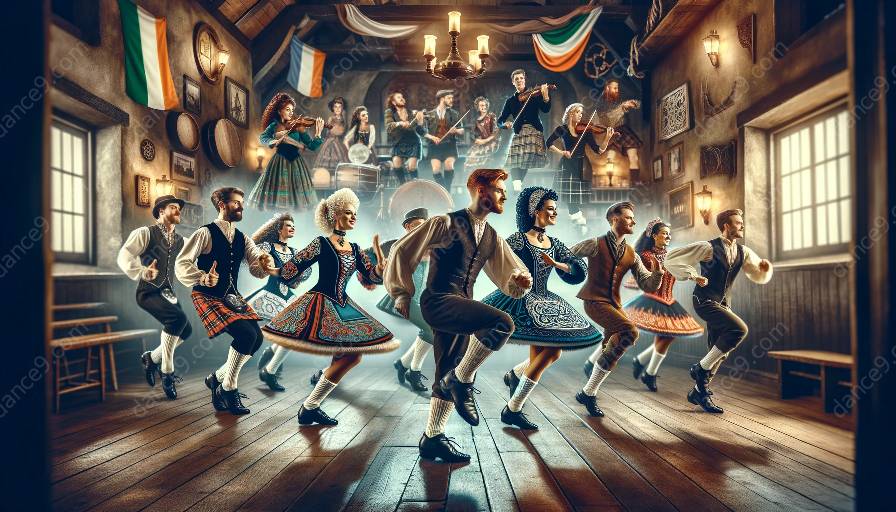Irish dance is a traditional form of dance that has gained global popularity for its unique footwork and infectious rhythm. At the heart of Irish dance is the lively music that accompanies the dancers, creating an enthralling and dynamic performance. In this topic cluster, we will delve into the role of music and rhythm in Irish dance, exploring its significance, the instruments used, and how it influences dance classes.
The Significance of Music in Irish Dance
The music of Irish dance holds deep cultural and historical significance. It is an integral part of Irish heritage and has been passed down through generations, evolving as a reflection of the country's rich tradition. Irish dance music is known for its lively and driving rhythms, often featuring rapid tempos and intricate melodies that perfectly complement the intricate footwork of the dancers.
Furthermore, the music serves as a means of storytelling, conveying emotions, and setting the mood for different types of Irish dance, be it the swift and exuberant jigs or the graceful and elegant reels. The tunes are steeped in folklore and tradition, providing a fascinating glimpse into the soul of Ireland.
Instruments Used in Irish Dance Music
A variety of traditional instruments contribute to the vibrant sound of Irish dance music. The fiddle, bodhrán, tin whistle, flute, and accordion are some of the most commonly used instruments, each adding its own unique flavor to the melodies. The fiddle, with its infectious melodies, is particularly synonymous with Irish dance music and is often the lead instrument in many performances.
The bodhrán, a traditional Irish drum, provides the pulsating rhythm that drives the dancers' movements, while the tin whistle and flute add a whimsical and melodic aspect to the music. The accordion, with its versatility, contributes to the rich and layered soundscape of Irish dance tunes, creating an ensemble that is both captivating and irresistible.
Integrating Music into Dance Classes
For aspiring Irish dancers, understanding the relationship between music and dance is essential. In dance classes, instructors focus on teaching students not only the steps and technique but also the importance of dancing in harmony with the music. The music becomes the guiding force, dictating the tempo, phrasing, and dynamics of the dance.
Students are encouraged to develop a keen ear for the music, learning to recognize different rhythms and musical patterns that drive the various styles of Irish dance. Through this integration, dancers gain a deeper appreciation for the music and its role in shaping their movements, fostering a more expressive and immersive dance experience.
In Conclusion
The music and rhythm in Irish dance form a captivating and essential component of this traditional art form. The infectious tunes, rooted in history and tradition, bring a unique vibrancy to the dance, propelling both dancers and audiences into an exhilarating journey through Ireland's cultural tapestry. Understanding the significance of music in Irish dance and the instruments that shape its sound paves the way for a deeper appreciation of this spirited art form, enriching the experiences of dancers and enthusiasts alike.













































































